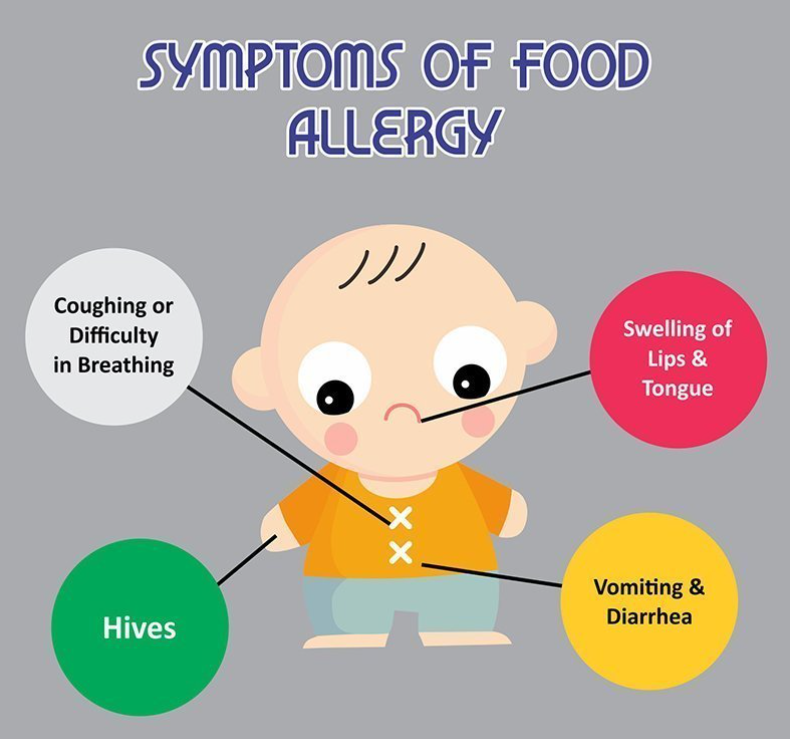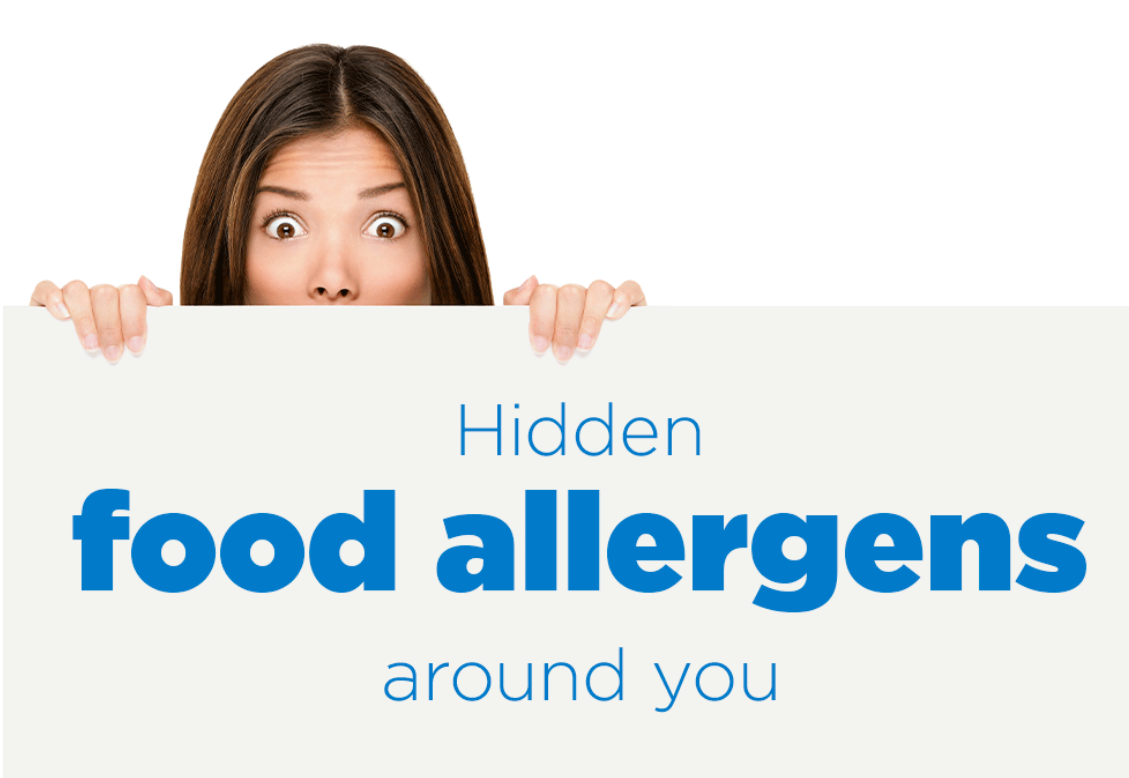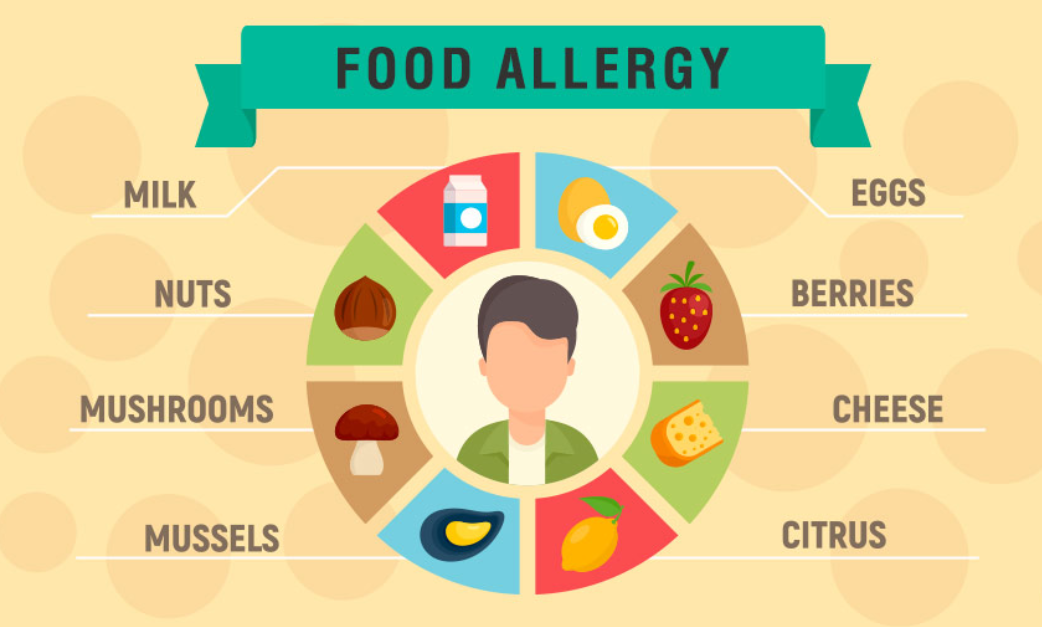What is a food allergy?
A food allergy is when the body’s immune system reacts unusually to specific foods. Although allergic reactions are often mild, they can be very serious. In the most serious cases, a person has a severe allergic reaction (anaphylaxis), which can be life threatening.
A food allergy is an immune system response that typically occurs shortly after consuming a specific food. Even a minuscule amount of the allergenic food can lead to various symptoms, such as digestive issues, hives, or swelling in the airways. For some individuals, the reaction can be severe, posing a life-threatening risk known as anaphylaxis.
Approximately 8% of children under the age of 5 and up to 4% of adults are affected by food allergies. Although there is no cure, some children may outgrow their food allergies as they grow older.
It is essential to differentiate between a food allergy and a more common condition called food intolerance, as they can be easily confused. Food intolerance is less severe and does not involve the immune system, although it can still cause discomfort.
Types of food allergies
That's correct. Food allergies can be categorized into three types based on the immune response they trigger and the timing of symptoms:
1. IgE-Mediated Food Allergy:
This is the most common type of food allergy and is characterized by the immune system producing an antibody called immunoglobulin E (IgE) in response to specific food proteins. Symptoms of an IgE-mediated food allergy typically occur rapidly, within seconds or minutes after consuming the allergenic food. These symptoms may include hives, itching, swelling, difficulty breathing, gastrointestinal disturbances, and in severe cases, anaphylaxis.
2. Non-IgE-Mediated Food Allergy:
In this type of allergy, the immune
response is not primarily mediated by IgE antibodies but by other cells in the
immune system. Symptoms of non-IgE-mediated food allergies may take longer to
develop, usually occurring hours to even days after consuming the trigger food.
Common symptoms include gastrointestinal issues (such as vomiting, diarrhea, or
abdominal pain), skin rashes, and chronic conditions like eosinophilic
esophagitis.
3. Mixed IgE and Non-IgE-Mediated Food Allergies:
Some individuals may
experience symptoms from both types of food allergies, exhibiting a combination
of rapid-onset IgE-mediated reactions and delayed-onset non-IgE-mediated
reactions.
Diagnosing and managing non-IgE-mediated food allergies can be more challenging
because the symptoms are not as immediate and can be less specific. Additionally,
these allergies may require specialized testing and evaluation to determine the
underlying triggers.
If you suspect you or someone else has a food allergy, it's crucial to seek
medical evaluation from a healthcare professional, particularly an allergist or
immunologist, who can perform appropriate tests, diagnose the specific type of
food allergy, and provide guidance on managing and avoiding allergens
effectively.
What are the symptoms of a food allergy?
You are absolutely right. Food allergy symptoms typically manifest within a few minutes to a couple of hours after consuming the offending food. The symptoms can vary depending on the individual and the severity of the allergic response.
 |
Some of the classic food allergy symptoms include:
Gut Reactions:
- Abdominal pain or cramping
- Nausea
- Vomiting
- Diarrhea
Skin Reactions:
- Itching and swelling of the skin- Hives (urticaria) - raised, red, itchy welts on the skin
- Eczema - inflamed, irritated, itchy skin
Respiratory Reactions:
- Runny or stuffy nose- Sneezing
- Wheezing
- Coughing
- Shortness of breath or difficulty breathing
Other potential symptoms may include:
- Oral Allergy Syndrome (OAS):
Itchy or tingling sensation in the mouth,
lips, tongue, and throat after eating certain fresh fruits, vegetables, or
nuts. OAS is common in people with pollen allergies, and the symptoms are
usually localized to the mouth area.
- Gastroesophageal Reflux Disease (GERD):
In some cases, a food allergy
can trigger or exacerbate symptoms of acid reflux or GERD.
- Anaphylaxis:
In severe cases, a food allergy can lead to anaphylaxis,
which is a life-threatening allergic reaction affecting multiple body systems.
Anaphylaxis can cause difficulty breathing, swelling of the face and throat, a
drop in blood pressure, and loss of consciousness. Anaphylaxis requires
immediate medical attention and the use of epinephrine through an
auto-injector.
It's important to note that food allergies can vary in their presentation and
severity, and not everyone with a food allergy will experience all of these
symptoms. Additionally, some symptoms, like eczema, may take longer to develop,
making it important to be vigilant for delayed reactions as well.
If you suspect you have a food allergy or have experienced any of these
symptoms after eating specific foods, it's crucial to seek medical evaluation
from a healthcare professional, particularly an allergist or immunologist, for
proper diagnosis and management.
How can I manage my food allergy?
Absolutely, those are essential aspects of managing a food allergy. Let's elaborate on each of these key points:
1. Identify and Avoid the Cause
The
first step in managing a food allergy is to identify the specific food or foods
that trigger your allergic reactions. Keep track of your diet and any symptoms
that occur after eating certain foods. An elimination diet may be helpful in
identifying problem foods by removing suspected allergens from your diet and
then reintroducing them one at a time to see if any reactions occur.
Once you know your food allergens, take steps to avoid them. Read food labels
carefully to identify potential allergens in packaged foods, and be cautious
about cross-contamination in food preparation areas, especially in restaurants
or social settings.
2. Recognize the Symptoms of an Allergic Reaction by Keeping a Food
Diary:
Keeping a detailed food
diary can be very helpful in understanding your allergy triggers and the
specific symptoms you experience. Document what you eat, the time of day, and
any symptoms that arise after eating certain foods. This can help you and your
healthcare provider pinpoint the cause of your allergies and make necessary
adjustments to your diet and management plan.
3. Know What to Do If It Happens Again:
If you experience an allergic reaction to a food, it's essential to know how to
respond quickly and appropriately. For mild symptoms, over-the-counter
antihistamines may be sufficient to alleviate discomfort. However, for more
severe reactions or symptoms involving multiple body systems (such as
difficulty breathing or swelling of the throat), you must be prepared to use an
epinephrine auto-injector (e.g., EpiPen) and seek emergency medical attention
immediately. Your healthcare provider can provide personalized guidance on how
to manage allergic reactions and when to use epinephrine.
Additionally, it's crucial to educate those around you about your food allergy
and how to recognize and respond to an allergic reaction. This includes family
members, friends, coworkers, school staff (in the case of children with food
allergies), and restaurant personnel if you dine out.
Proper management and preparedness are key to preventing and handling food
allergy reactions effectively, ultimately promoting your safety and well-being.
Work closely with your healthcare provider to develop an individualized
management plan tailored to your specific food allergies and needs.
Treatment for a food allergy
You are absolutely right.
Avoidance of the specific food allergen is the primary and most effective way
to prevent allergic reactions in individuals with food allergies. Identifying
the trigger foods through allergy testing and keeping a food diary can be
crucial in managing and avoiding allergens effectively.
It's important to emphasize the following points regarding food allergy
management:
1. Avoiding Radical Dietary Changes:
It's
essential to seek guidance from a healthcare professional, such as a GP or a
dietitian, before making any significant changes to your or your child's diet.
Cutting out entire food groups, such as dairy products, without proper guidance
can lead to nutritional deficiencies and other health issues. A dietitian can
help create a balanced and safe diet plan that accommodates food allergies
while meeting nutritional needs.
2. Antihistamines:
Antihistamines can be
effective in relieving mild to moderate allergic symptoms, such as itching,
hives, and sneezing. They work by blocking the action of histamine, a chemical
released during an allergic reaction. However, it's important to note that
antihistamines do not treat the underlying allergy or prevent anaphylaxis.
Always consult with a healthcare professional to determine the appropriate dose
and type of antihistamine for your specific situation.
3. Adrenaline (Epinephrine):
Adrenaline is the first-line treatment for severe allergic reactions, including
anaphylaxis. An epinephrine auto-injector, commonly known as an EpiPen, is a
life-saving device that delivers a rapid dose of adrenaline to counteract the
severe allergic response. Individuals with a history of severe allergies or
anaphylaxis should carry an epinephrine auto-injector at all times and be
trained on its proper use. Immediate administration of epinephrine is crucial
in anaphylactic emergencies, and emergency medical attention should always be
sought after using an epinephrine auto-injector.
4. Ongoing Research on Desensitization:
As mentioned, ongoing research is exploring methods to desensitize individuals
to specific food allergens, such as peanuts and milk. Desensitization, also
known as oral immunotherapy, involves gradual exposure to small, controlled
amounts of the allergen over time to build tolerance. However, these approaches
are still being studied and are not yet widely established in routine clinical
practice. It's essential to stay informed about the latest developments in food
allergy management through reputable sources and consult with healthcare
professionals for up-to-date recommendations.
Overall, proper management of food allergies involves a combination of allergen
avoidance, appropriate medical treatments (such as antihistamines and
adrenaline), and education on recognizing and responding to allergic reactions.
Working closely with healthcare providers can ensure a comprehensive and
personalized approach to managing food allergies effectively and safely.
What are the top 14 food allergens?
The top 14 food allergens are a group of foods that are most commonly associated with allergic reactions. These foods are responsible for the majority of food allergies and are often regulated by food labeling laws in many countries.
The top 14 food allergens include:
1. Milk: This includes cow's milk and products made from cow's milk, such as cheese, yogurt, and butter.
2. Eggs: All types of eggs, including chicken, duck, and quail eggs.
3. Peanuts: Peanuts are a legume and not a tree nut. They are one of the most common and severe allergens.
4. Tree Nuts: This category includes a variety of nuts such as almonds, cashews, walnuts, hazelnuts, pistachios, and others.
5. Soy: Soybeans and soy-based products, including tofu, soy milk, and soy sauce.
6. Wheat: This includes all forms of wheat, such as bread, pasta, cereals, and baked goods.
7. Fish: Common fish allergens include salmon, tuna, cod, and others.
8. Crustacean Shellfish: This category includes shellfish with a hard outer shell, such as shrimp, crab, lobster, and crayfish.
9. Molluscan Shellfish: This category includes shellfish with a soft body, such as clams, mussels, oysters, and scallops.
10. Mustard: Mustard seeds and products containing mustard, like mustard sauce and prepared mustard.
11. Sesame Seeds: Sesame seeds are used in various foods, including bread, crackers, and certain dressings.
12. Sulphur Dioxide and Sulphites (sometimes known as sulfites): These are used as preservatives in certain foods and drinks, like dried fruits, wine, and processed meats.
13. Celery: This includes celery stalks, leaves, seeds, and celeriac (celery root).
14. Lupin: Lupin is a legume, and its flour is sometimes used in gluten-free products.
It's important to note that the prevalence and regulatory requirements for food
allergens may vary from country to country. For example, in the European Union,
celery, lupin, and mustard are among the top 14 allergens, while in the United
States, they are not part of the top 8 allergens but are still considered
important allergens.
Always read food labels carefully to identify potential allergens in packaged
foods, and be cautious about cross-contamination in food preparation areas to
avoid accidental exposure to these allergens if you or someone you know has a
food allergy.













0 Comments